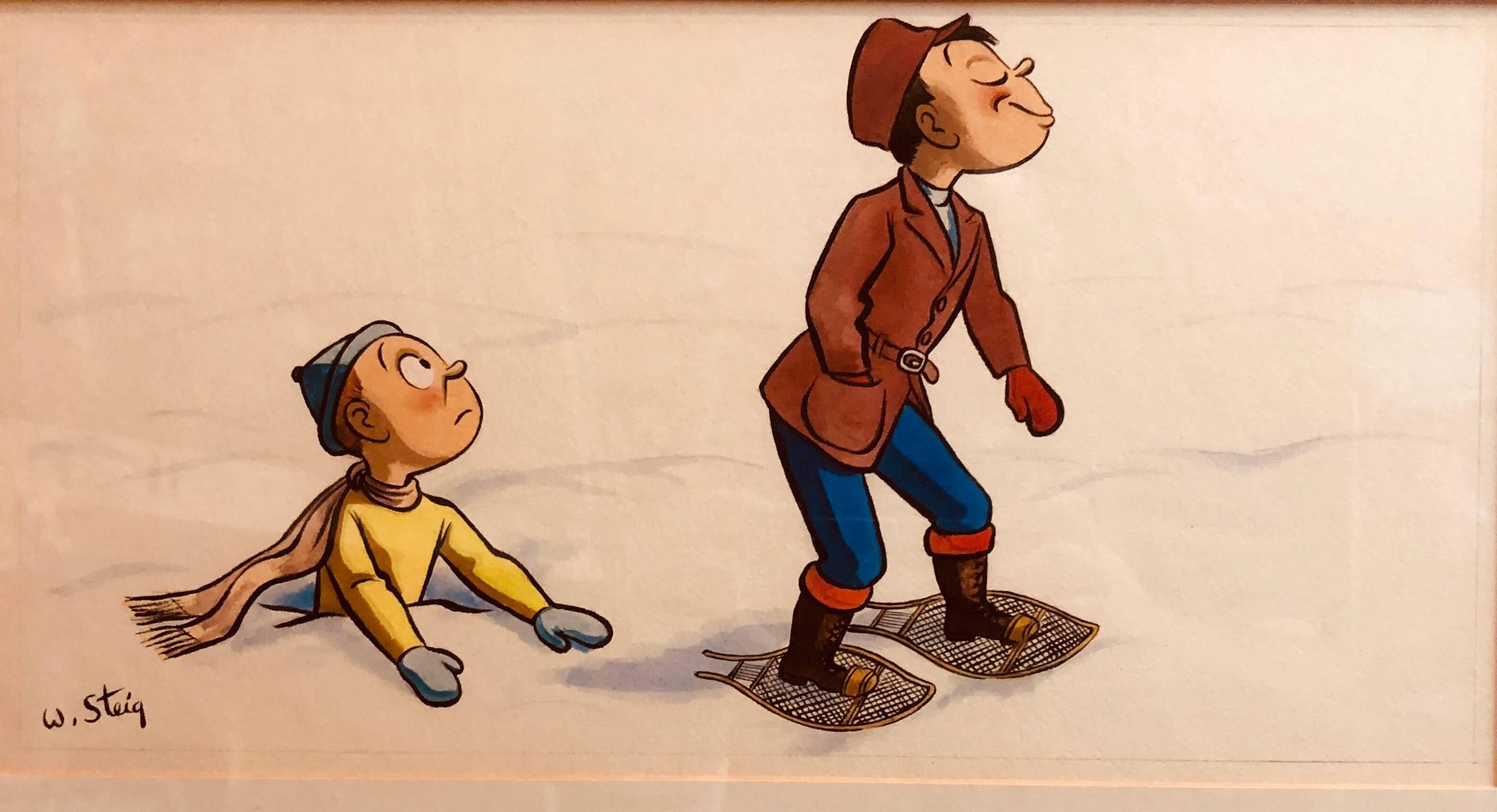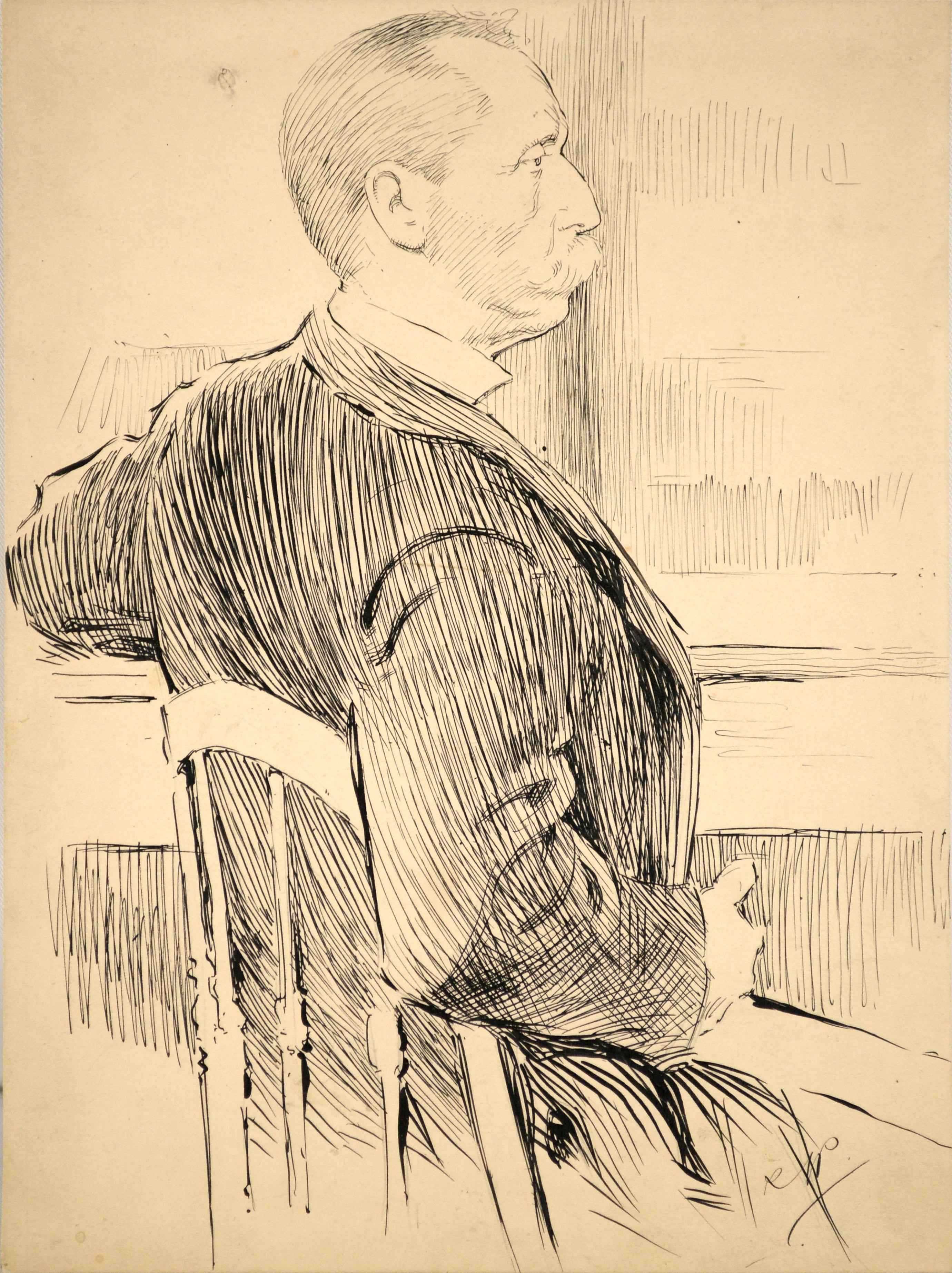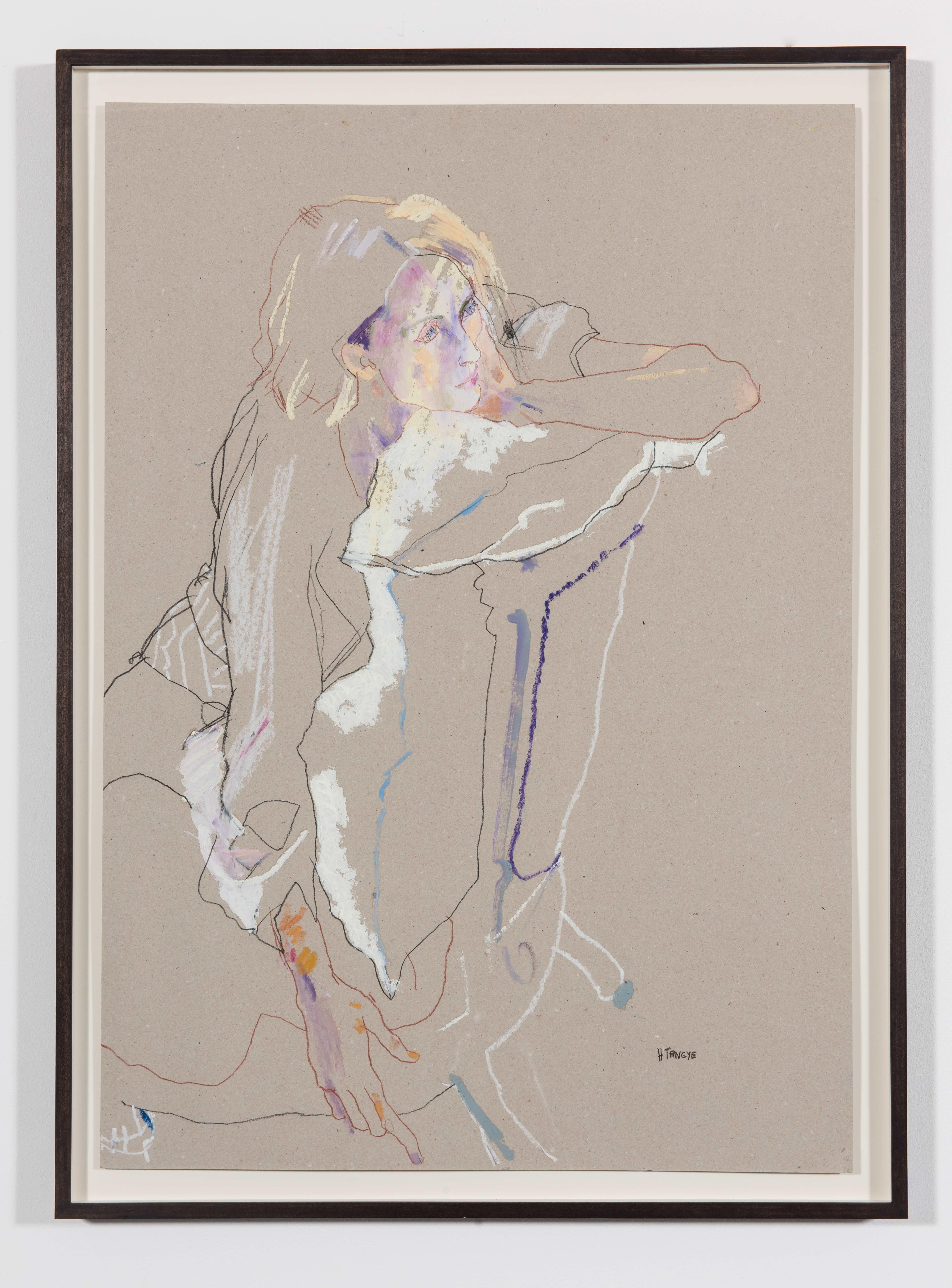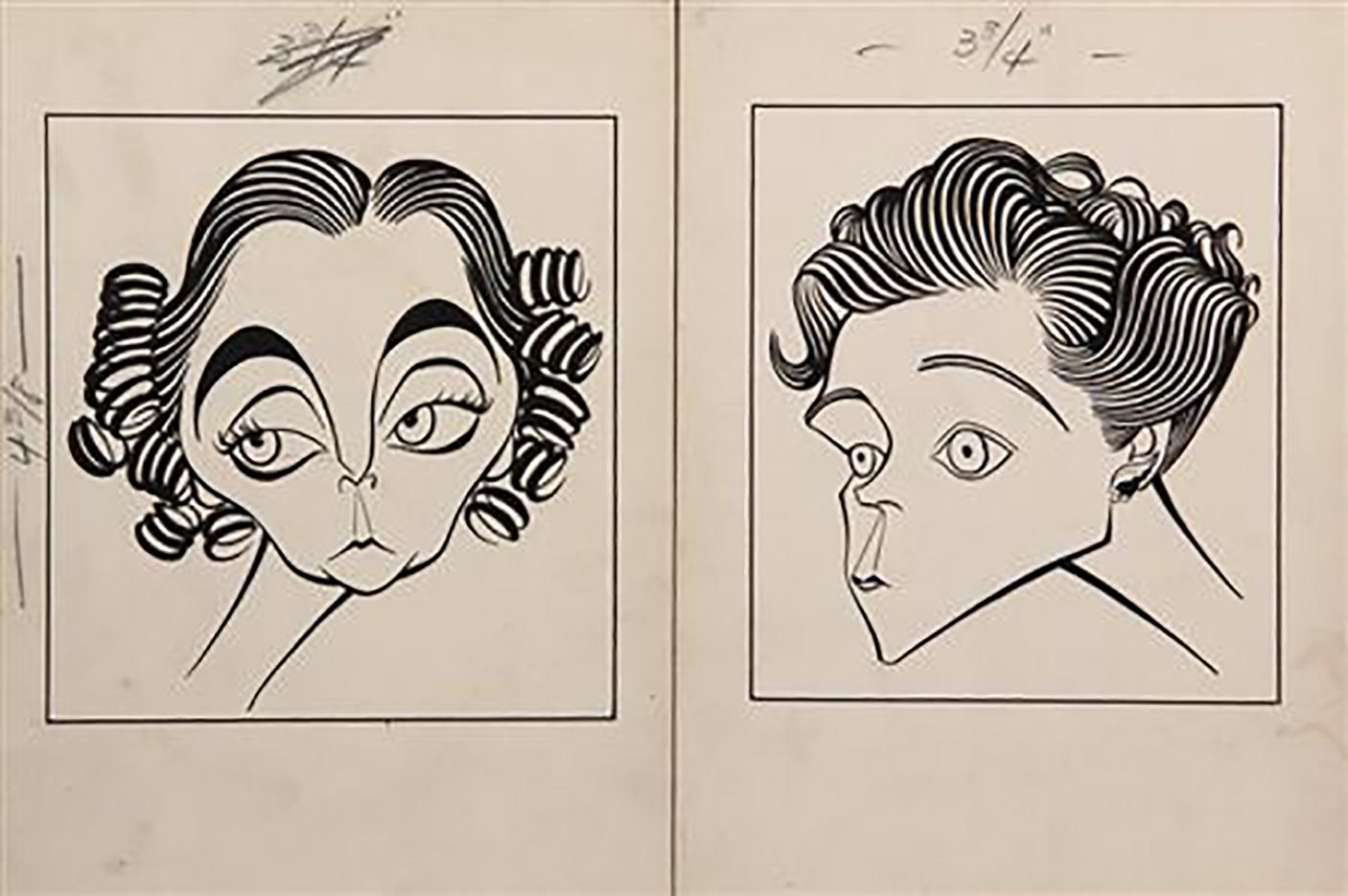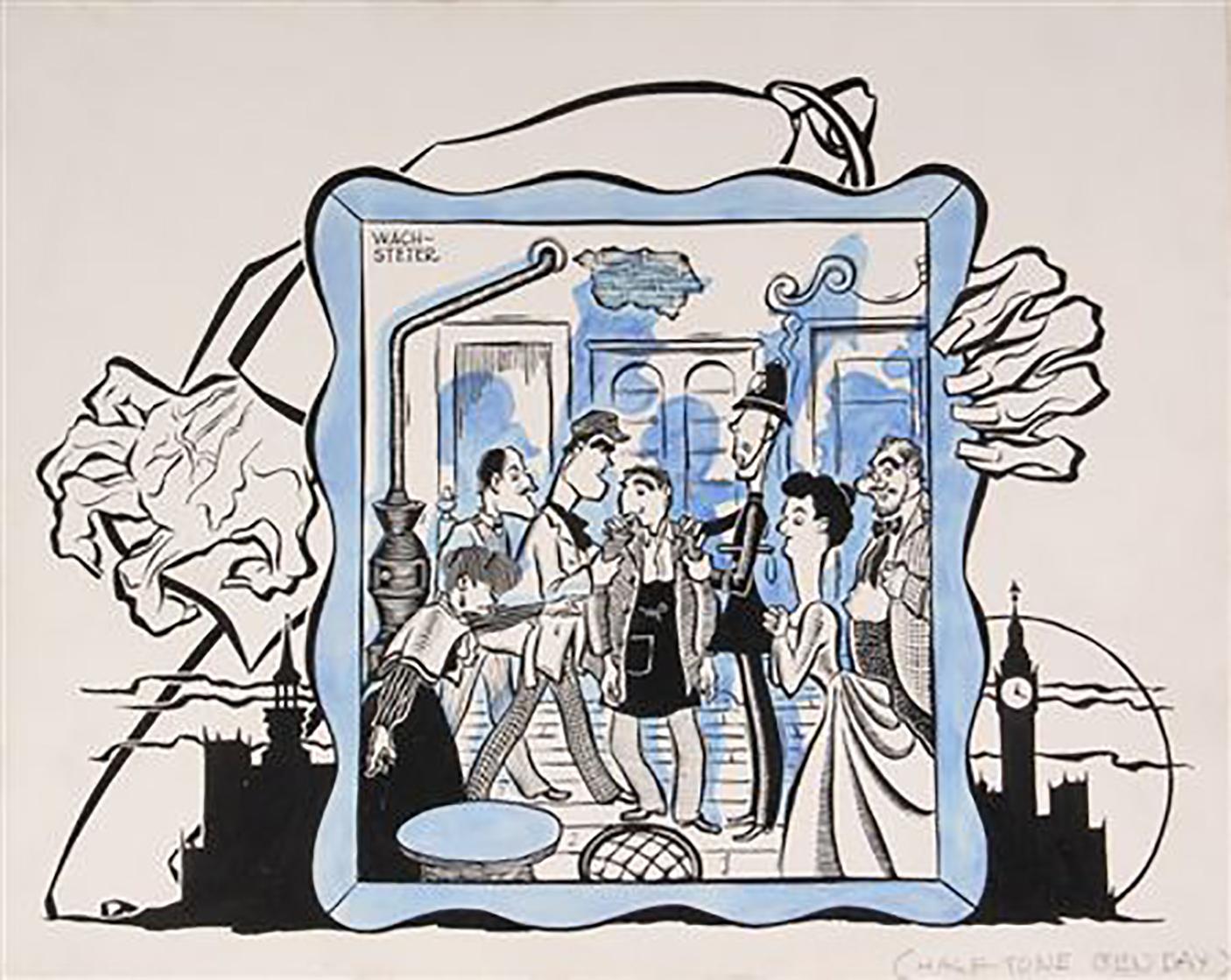Items Similar to 1890 Political Cartoon by "Crichton" of Michael Henry de Young
Want more images or videos?
Request additional images or videos from the seller
1 of 5
Unknown1890 Political Cartoon by "Crichton" of Michael Henry de Young1890
1890
About the Item
Medium: India Ink on Illustration Board
Signature: Signed "Crichton" Lower Left
Sight Size 20.00" x 15.00," Framed 16.50" x 13.50"
A critique of Michael Henry de Young (1849-1925), Director of the Associated Press, Editor of the San Francisco Chronicle newspaper. In black frame, under glass.
- Creation Year:1890
- Dimensions:Height: 20 in (50.8 cm)Width: 15 in (38.1 cm)
- Medium:
- Period:
- Condition:
- Gallery Location:Fort Washington, PA
- Reference Number:1stDibs: LU38436029282
About the Seller
5.0
Recognized Seller
These prestigious sellers are industry leaders and represent the highest echelon for item quality and design.
Established in 1995
1stDibs seller since 2016
106 sales on 1stDibs
Typical response time: 2 hours
- ShippingRetrieving quote...Ships From: Fort Washington, PA
- Return PolicyA return for this item may be initiated within 14 days of delivery.
More From This SellerView All
- ZaSu Pitts in "Cordelia" &" Eva Le Gallienne" (2)By George WachsteterLocated in Fort Washington, PAMedium: Pen and Ink on Illustration Board Signature: Unsigned Caricatures by George Wachsteter (1911-2004) of ZaSu Pitts in `Cordelia` & Eva Le Gallienne h...Category
1960s Figurative Drawings and Watercolors
MaterialsInk, Illustration Board, Pen
- Caricature for "The Stranger"By George WachsteterLocated in Fort Washington, PAMedium: Pen and Ink on Illustration Board Signature: Signed Upper LeftCategory
1940s Figurative Drawings and Watercolors
MaterialsInk, Illustration Board, Pen
- Caricatures of Four Broadway Male Stars, Sept. 1946 (4)By George WachsteterLocated in Fort Washington, PAMedium: Pen and Ink on Illustration Board Signature: Signed Lower Right Caricatures by George Wachsteter (1911-2004) of four Broadway male stars, Sept 1946, including Lew Parker, Ri...Category
1940s Figurative Drawings and Watercolors
MaterialsInk, Illustration Board, Pen
- Don McNeill for "TV Club"By George WachsteterLocated in Fort Washington, PAMedium: Pen and Ink on Illustration Board Signature: Signed Lower Right Caricature by George Wachsteter (1911-2004) of Don McNeill for the 1950-51 ABC-TV series `TV Club` (aka `Don McNeill`s TV Club), a one-hour prime time...Category
1950s Figurative Drawings and Watercolors
MaterialsInk, Illustration Board, Pen
- "All in Good Time"By George WachsteterLocated in Fort Washington, PAMedium: Pen and Ink on Illustration Board Signature: Signed Lower Left Caricature by George Wachsteter (1911-2004) for 1965 Broadway Comedy `All in Good Time` starring Donald Wolfit, Hazel Douglas, John Sharp...Category
1960s Figurative Drawings and Watercolors
MaterialsInk, Illustration Board, Pen
- 1958 Broadway Musical Revue, "International Soiree"By George WachsteterLocated in Fort Washington, PAMedium: Pen and Ink on Illustration Board Signature: Signed Lower Right Caricature by George Wachsteter (1911-2004) for 1958 Broadway Musical Revue `International Soiree`, starring French singing star Patachou, Hiram Sherman. Featuring Spanish flamenco dancers Caracolillo and Maria Rosa, Belgian pantomimist Cornelis and George La Faye`s French puppets...Category
1950s Figurative Drawings and Watercolors
MaterialsInk, Illustration Board, Pen
You May Also Like
- Whimsical Illustration "Snow" Cartoon, 1938 Mt Tremblant Ski Lodge William SteigBy William Steig (b.1907)Located in Surfside, FLLighthearted Illustration of Outdoor Pursuits This one being cross country Snow Shoes signed "W. Steig" Provenance: from Mrs. Joseph B. Ryan, Commissioned by ...Category
1930s American Modern Figurative Drawings and Watercolors
MaterialsIndia Ink, Watercolor, Illustration Board
- 19th C. Newspaper Illustration of Hiram H. Hobbs, Foreman of the Grand Jury 1898Located in Soquel, CAHistorical late 19th century portrait of Hiram H. Hobbs, Foreman of the Grand Jury of San Francisco y Richard Langtry Partington (American, ...Category
1890s American Impressionist Portrait Drawings and Watercolors
MaterialsIndia Ink, Illustration Board
- Whimsical Fishing Illustration Cartoon 1938 Mt Tremblant Ski Lodge William SteigBy William Steig (b.1907)Located in Surfside, FLLighthearted Illustration of Outdoor Pursuits This one of a fisherman signed "W. Steig" Provenance: from Mrs. Joseph B. Ryan, Commissioned by Joe Ryan for the bar at his ski resort, Mount Tremblant Lodge, in 1938. Mont Tremblant, P.Q., Canada Watercolor and ink on illustration board, sights sizes 8 1/2 x 16 1/2 in., framed. In 1938 Joe Ryan, described as a millionaire from Philadelphia, bushwhacked his way to the summit of Mont Tremblant and was inspired to create a world class ski resort at the site. In 1939 he opened the Mont Tremblant Lodge, which remains part of the Pedestrian Village today. This original illustration is on Whatman Illustration board. the board measures 14 X 22 inches. label from McClees Galleries, Philadelphia, on the frame backing paper. William Steig, 1907 – 2003 was an American cartoonist, sculptor, and, in his later life, an illustrator and writer of children's books. Best known for the picture books Sylvester and the Magic Pebble, Abel's Island, and Doctor De Soto, he was also the creator of Shrek!, which inspired the film series of the same name. He was the U.S. nominee for both of the biennial, international Hans Christian Andersen Awards, as a children's book illustrator in 1982 and a writer in 1988. Steig was born in Brooklyn, New York in 1907, and grew up in the Bronx. His parents were Polish-Jewish immigrants from Austria, both socialists. His father, Joseph Steig, was a house painter, and his mother, Laura Ebel Steig, was a seamstress who encouraged his artistic leanings. As a child, he dabbled in painting and was an avid reader of literature. Among other works, he was said to have been especially fascinated by Pinocchio.He graduated from Townsend Harris High School at 15 but never completed college, though he attended three, spending two years at City College of New York, three years at the National Academy of Design and a mere five days at the Yale School of Fine Arts before dropping out of each. Hailed as the "King of Cartoons" Steig began drawing illustrations and cartoons for The New Yorker in 1930, producing more than 2,600 drawings and 117 covers for the magazine. Steig, later, when he was 61, began writing children's books. In 1968, he wrote his first children's book. He excelled here as well, and his third book, Sylvester and the Magic Pebble (1969), won the Caldecott Medal. He went on to write more than 30 children's books, including the Doctor DeSoto series, and he continued to write into his nineties. Among his other well-known works, the picture book Shrek! (1990) formed the basis for the DreamWorks Animation film Shrek (2001). After the release of Shrek 2 in 2004, Steig became the first sole-creator of an animated movie franchise that went on to generate over $1 billion from theatrical and ancillary markets after only one sequel. Along with Maurice Sendak, Saul Steinberg, Ludwig Bemelmans and Laurent de Brunhofff his is one of those rare cartoonist whose works form part of our collective cultural heritage. In 1984, Steig's film adaptation of Doctor DeSoto directed by Michael Sporn was nominated for the Academy Award for Best Animated Short Film. As one of the most admired cartoonists of all time, Steig spent seven decades drawing for the New Yorker magazine. He touched generations of readers with his tongue–in–cheek pen–and–ink drawings, which often expressed states of mind like shame, embarrassment or anger. Later in life, Steig turned to children's books, working as both a writer and illustrator. Steig's children's books were also wildly popular because of the crazy, complicated language he used—words like lunatic, palsied, sequestration, and cleave. Kids love the sound of those words even if they do not quite understand the meaning. Steig's descriptions were also clever. He once described a beached whale as "breaded with sand." Throughout the course of his career, Steig compiled his cartoons and drawings into books. Some of them were published first in the New Yorker. Others were deemed too dark to be printed there. Most of these collections centered on the cold, dark psychoanalytical truth about relationships. They featured husbands and wives fighting and parents snapping at their kids. His first adult book, Man About Town, was published in 1932, followed by About People, published in 1939, which focused on social outsiders. Sick of Each Other, published in 2000, included a drawing depicting a wife holding her husband at gunpoint, saying, "Say you adore me." According to the Los Angeles Times, fellow New Yorker artist...Category
1930s American Modern Figurative Drawings and Watercolors
MaterialsIndia Ink, Watercolor, Illustration Board
- Freya (Seated Backwards), Mixed media on grey boardBy Howard TangyeLocated in London, GBHoward Tangye (b.1948, Australia) has been an influential force in fashion for decades. Lecturing at London’s Central Saint Martins for 35 years, including 16 years as head of BA Wom...Category
2010s Contemporary Figurative Paintings
MaterialsOther Medium, Archival Paper, Handmade Paper, Pen, Felt Pen, Permanent M...
- 'Life Among the Clouds', Hookah, Persian, Indian, Sufi, HashishBy Keith HalonenLocated in Santa Cruz, CASigned lower right, "Keith Halonen" (American, b. 1946), dated 1969, and titled lower left, "Life Among the Clouds". Richly patterned, ink figurative showing a man lounging on the f...Category
1960s Modern Figurative Drawings and Watercolors
MaterialsInk, Illustration Board
- Environmental Prognostication Coil Narrative "Homo Sapiens R.I.P."Located in Miami, FL"They paved paradise and put up a parking lot," Joni Mitchell said. - - Created in 1969, at the dawn of the American environmental movement, artist Richard Erdoes draws a sequential narrative in the form of a coil. From inception to destruction, it illustrates a list of things that humans are doing to destroy the world we live in. The work was commissioned for school-age humans and executed in a whimsically comic way. Yet the underlying narrative is sophisticated and foreshadows a world that could be on the brink of ecological disaster. Graphically and conceptually, this work exhibits an endless amount of creativity and Erdoes cartoony style is one to fall in love with. Signed lower right. Unframed 12.4 inches Width: 12.85 inches Height is the live area. Board is 16x22 inches. Richard Erdoes (Hungarian Erdős, German Erdös; July 7, 1912 – July 16, 2008) was an American artist, photographer, illustrator and author. Early life Erdoes was born in Frankfurt,to Maria Josefa Schrom on July 7, 1912. His father, Richárd Erdős Sr., was a Jewish Hungarian opera singer who had died a few weeks earlier in Budapest on June 9, 1912.After his birth, his mother lived with her sister, the Viennese actress Leopoldine ("Poldi") Sangora,He described himself as "equal parts Austrian, Hungarian and German, as well as equal parts Catholic, Protestant and Jew..."[4] Career He was a student at the Berlin Academy of Art in 1933, when Adolf Hitler came to power. He was involved in a small underground paper where he published anti-Hitler political cartoons which attracted the attention of the Nazi regime. He fled Germany with a price on his head. Back in Vienna, he continued his training at the Kunstgewerbeschule, now the University of Applied Arts, Vienna.[5] He also wrote and illustrated children's books and worked as a caricaturist for Tag and Stunde, anti-Nazi newspapers. After the Anschluss of Austria in 1938 he fled again, first to Paris, where he studied at the Academie de la Grande Chaumiere, and then London, England before journeying to the United States. He married his first wife, fellow artist Elsie Schulhof (d. xxxx) in London, shortly before their arrival in New York City. In New York City, Erdoes enjoyed a long career as a commercial artist, and was known for his highly detailed, whimsical drawings. He created illustrations for such magazines as Stage, Fortune, Pageant, Gourmet, Harper's Bazaar, Sports Illustrated, The New York Times, Time, National Geographic and Life Magazine, where he met his second wife, Jean Sternbergh (d. 1995) who was an art director there. The couple married in 1951 and had three children.[6] Erdoes also illustrated many children's books. An assignment for Life in 1967 took Erdoes to the Pine Ridge Indian Reservation for the first time, and marked the beginning of the work for which he would be best known. Erdoes was fascinated by Native American culture, outraged at the conditions on the reservation and deeply moved by the Civil Rights Movement that was raging at the time. He wrote histories, collections of Native American stories...Category
1960s American Realist Landscape Drawings and Watercolors
MaterialsInk, Gouache, Illustration Board
Recently Viewed
View AllMore Ways To Browse
Cartoon Art
Cartoon Painting
Signed Cartoon
Political Illustrations
Antique San Francisco
San Francisco Antique
Associated Press
Drawing Cartoon
Framed Cartoon
Henry Press
Cartoon Illustration
Antique Paintings Of India
Antique Cartoons
Cartoon Politics
Political Cartoon
Political Cartoons
India Painting On Glass
Glass Cartoon
